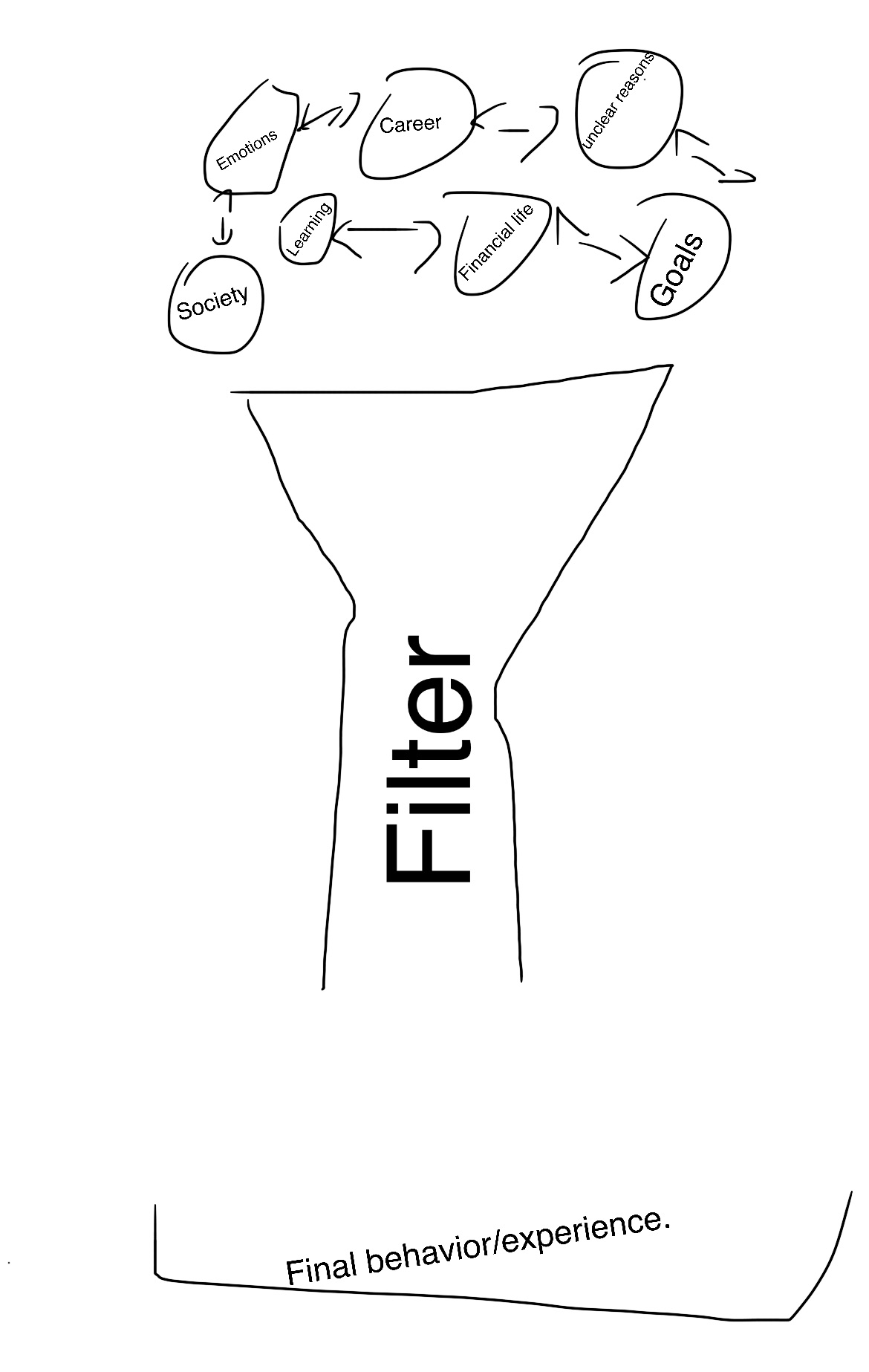Who is behind the wheel?
Are the motivators behind our behavior some kind of crystal-clear variables that we see clearly on introspection? Well, due to the magnitude and temporal-limitations of our behavior motivators sometimes, It’s hard to know what drives the behavior we did or intend to do. There is such a wide-variety of inputs we derive our behaviors from that sometimes it’s easy to lose track of all the mechanisms behind these behaviors (That’s why game theory is there to somwhat help us with this). In one way, the “who is behind the wheel” analogy is a fallacious one because it assumes that the behavior driver and the behavior doer are two separate things, but a lot of the times the behavior doer and the behavior mechanisms are just one part of the same mesh i.e. us. But I am happy to stick with the analogy here because I think it’s good to strip away the behavior motivators from the doer, and then after examining it abstractly, we can re-embed it into the behavior doer and see how it weighs in with the other factors.
When we are talking about these variables, what kind of things are we talking about ? One way I thought about it is to separate these motivators into psychological ones and reasoning ones. So by psychological ones, I mean the behavior motivators that actually push one to behave a certain way due to first-person subjective experiences, like emotions. Reasoning ones fall under the tendency towards a behavior due to leaning towards logic/thinking, like weighing pros and cons of an experience, for example. It might be that this is actually a false dichotomy, and it turns out to be lots of other “types”, but I think a good portion of these motivators fall in one way or another under these two umbrellas.
But are these two separate from each other after we apply them to a non-abstract realistic context? One thing to put in mind is that factors lying under those two types are dependent variables in the loose sense of the term. An example of that would be the ability of our subjective emotions to somewhat skew our “logical analysis” into one way rather than another.
Taking this a step further, let’s try examining the behavior of Adolf Hitler in the context of killing the Jews. When he thought that he had the right to kill people of a certain group, what was actually wrong with this type of behavior from the inside perspective i.e. the motivators of his behaviors ? From one angle, I see it as fundamentally a lack of well-prioritized behavior drivers in the context of his leadership. What I mean by this is that he prioritized the state of him having the right to kill a certain group of people (for whatever reason), rather than prioritize the idea that he might be wrong about the fate of those people (you can think of this sentence as describing an egoistic approach). The morals, specific historical context, other many specific factors can be for another day, but hopefully we can see how one aspect of the systematic structure of a behavior can actually unravel some aspects of its origins, in one way.
When it comes to experiences, I tend to think it’s useful to evaluate what’s pushing us towards going through a certain experience or towards avoiding it, even if it seems obvious that it’s the “right” thing to do. For example, if we take “comfort zones” (whatever that means), and say that a person’s “comfort” lies within a certain limit in a social context e.g. comfortable not approaching people. This comfort the person has built can actually skew ones career goals ,for example, towards being inside this “comfort zone”, if that makes sense. So in this example the “comfort zone” might be put as a priority subconsciously rather than a certain career goal, which might at one point lead the person to actually change their career goals to “good enough” rather than “great” just to encompass his/her experiences within the boundaries of this psychological status i.e. comfort zone (the good/great scale here is the person’s actual desire if the “comfort zone” was absent).
To make it more vivid, let’s check out a semi-visual depiction of the process of enacting in a certain behavior/experience in two drawings I drew, which compares two types of approaches towards an experience or behavior in a crude way. When behavior goes to become an automated process:
Trial to optimize by passing the behavior through a “filter” i.e. constant recognition of behavior drivers:
I think I have stressed the structure of enacting in different kinds of behaviors here because I think the chances of going “autopilot” are much more when priorities/structures of our behavior stimulators are not known consciously. When “autopilot” is on, I believe it’s hard to ever feel any slap in the face that life tends to give us sometimes. And I think it’s necessary to be able to take/detect those slaps, and harness something out of that energy.